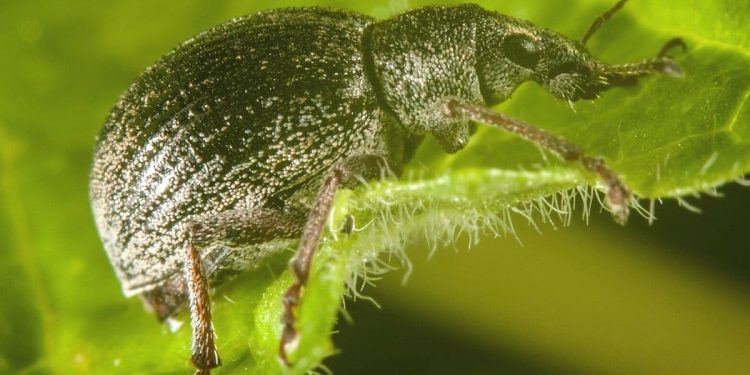#SaveTheApples #AnthonomusPomorum #PestControl #AppleIndustry #SustainableAgriculture
Keywords: Anthonomus pomorum, apple blossom weevil, pest control, apple industry, sustainable agriculture
The Anthonomus pomorum, commonly known as the apple blossom weevil, is a notorious pest that poses a significant threat to apple trees, causing significant damage to apple blossoms and reducing fruit yield. The pest can affect apple production in orchards worldwide, causing considerable economic losses to the apple industry. In this article, we will explore the development of this pest, its impact on the apple industry, and the measures taken to control its spread.
The apple blossom weevil is a native to Europe but has spread to other parts of the world, including North America, South America, and Asia. The pest is a small beetle that measures between 3 to 5 millimeters in length, with a brownish color and a distinctive snout. Adult weevils typically feed on apple buds and flowers, while their larvae bore into the fruit, causing extensive damage to the developing apple.
The impact of the apple blossom weevil on the apple industry is significant, with losses in yield ranging from 10 to 50 percent. The pest also reduces the quality of the fruit, making it difficult for growers to meet the stringent quality standards required in the industry. To combat the threat of the apple blossom weevil, growers have resorted to using chemical pesticides, which pose a significant risk to the environment and human health.
However, recent developments in pest control technology have provided a more sustainable approach to managing the apple blossom weevil. For example, researchers have developed pheromone-based traps that attract the adult weevils and prevent them from laying eggs in the apple blossoms. Additionally, biological control agents, such as predatory mites, have been used to reduce the population of apple blossom weevils without using harmful chemicals.
In conclusion, the apple blossom weevil is a significant threat to the apple industry, causing significant economic losses and reducing fruit yield. However, with sustainable pest control measures, such as pheromone-based traps and biological control agents, growers can effectively manage the spread of this pest and safeguard the future of apple production.








